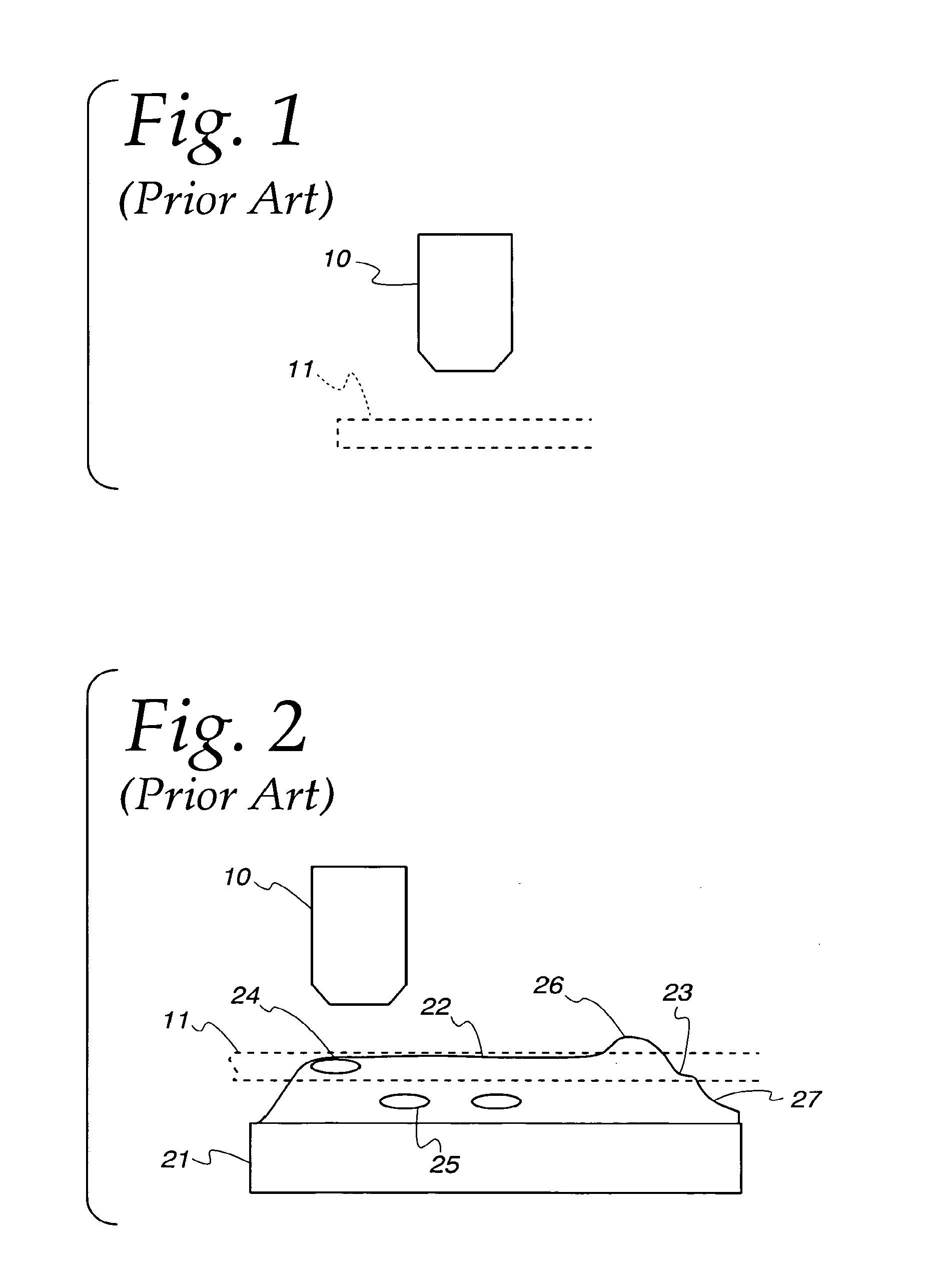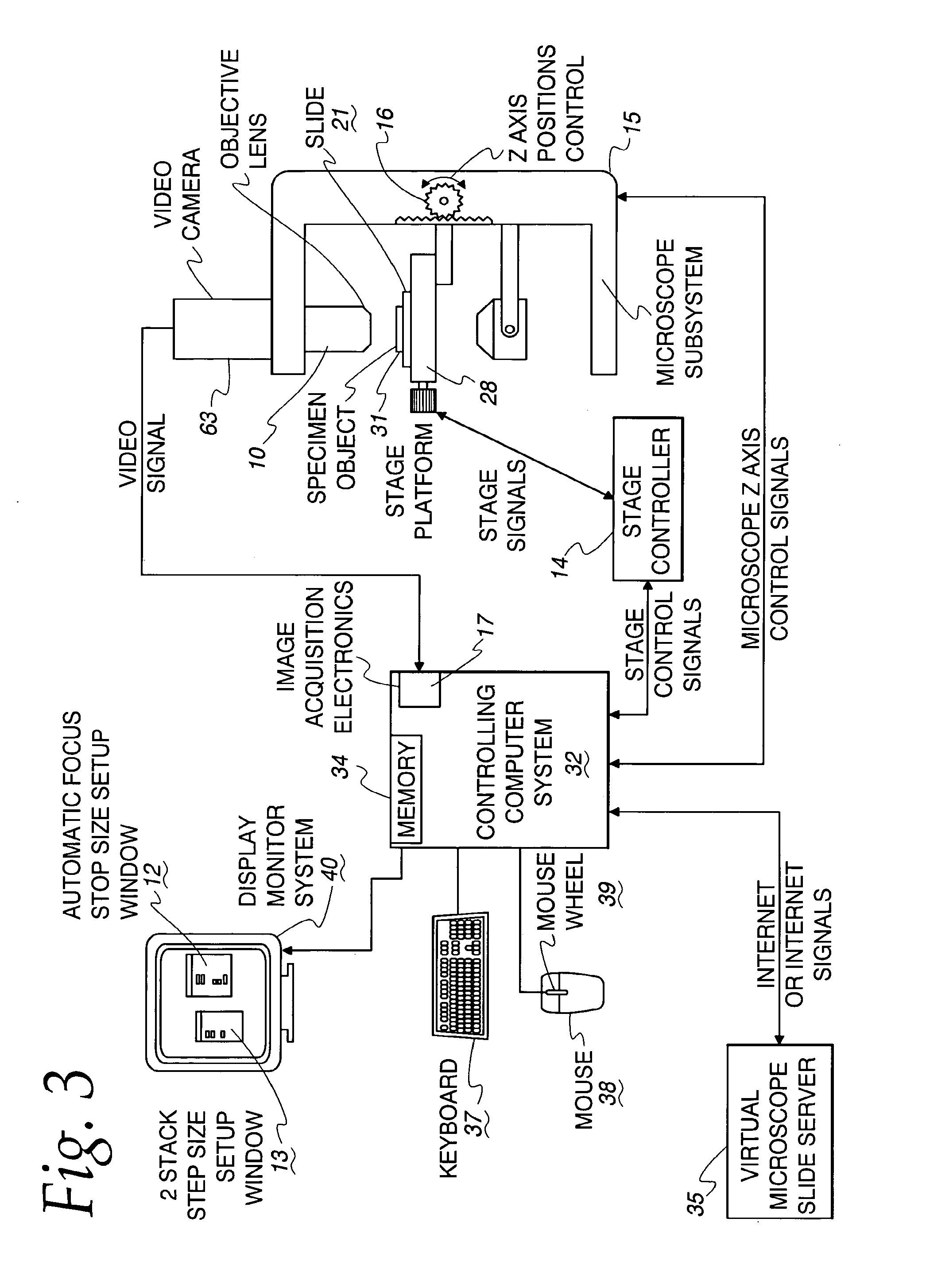Focusable virtual microscopy apparatus and method
a virtual microscopy and microscopy technology, applied in the field of focusable virtual microscopy apparatus and method, can solve the problems of small loss of color and spatial information, small loss of image information, and inability to produce uniform thickness sections of microtomes, etc., to achieve efficient user visual inspection, increase usable image content, and save image information
- Summary
- Abstract
- Description
- Claims
- Application Information
AI Technical Summary
Benefits of technology
Problems solved by technology
Method used
Image
Examples
Embodiment Construction
[0032]FIG. 3 is a block diagram of a system according to the invention for acquiring a virtual microscope slide, that includes a Z-axis image dimension across the entire virtual slide. The system includes a microscope subsystem 15 with a digitally controlled stage platform 28 for supporting the glass microscope slide 21. The digital stage platform 28 can operate over a large number of increments to position the stage in the horizontal x and y plane with high precision. A glass microscope slide or other substrate 21 is placed on the stage 28. The system also includes a controlling computer system 32 with a keyboard 37, a mouse 38 with a mouse wheel control 39, and a display monitor 40. The controlling computer system keyboard and mouse are used via the automatic focus step size setup window 12 to input the automatic focus step size parameters and the Z Stack step size setup window 13 is used to input the Z Stack step size parameters.
[0033]FIG. 3A shows the focus setup step size 55 in...
PUM
 Login to view more
Login to view more Abstract
Description
Claims
Application Information
 Login to view more
Login to view more - R&D Engineer
- R&D Manager
- IP Professional
- Industry Leading Data Capabilities
- Powerful AI technology
- Patent DNA Extraction
Browse by: Latest US Patents, China's latest patents, Technical Efficacy Thesaurus, Application Domain, Technology Topic.
© 2024 PatSnap. All rights reserved.Legal|Privacy policy|Modern Slavery Act Transparency Statement|Sitemap



